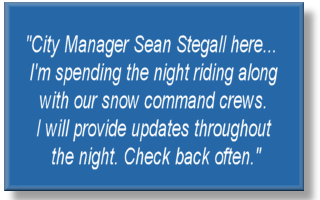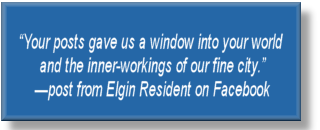Yesterday Dave Lawry and I presented Using Social Media to Communicate Emergency Response at the 2013 APWA North Amercian Snow Conference in Charlotte, North Carolina. It was fun to give the presentation with Dave because he had some interesting first-hand experiences with implementing social media as a communication tool, particularly during snow operations. His stories came from when he was serving as the Director of Public Works for the city of Elgin in Ill. – some of what they had done has been covered by this blog over the years.

About a year or so ago, Dave moved on to take a position with Chastain and Associates. But even though he is no longer with a city, he continues to encourage and help others in local government with figuring out how best to implement the use of social media. Today Dave led a roundtable discussion at the conference to further explore the topic and share thoughts. He sent me an email and said, "The followup round table was well attended today with two from the class yesterday wishing to continue the discussion. My table was full." Even though I would have liked to attend, I had to return to Illinois because of other commitments so missed the discussion, but I am sure based on the questions we got yesterday it was helpful and informative.
Fortunately I'll be able to work again with Dave in the Fall when we discuss Social Media and Public Works at the 12th Annual Public Service Institute on Oct. 8, 2013, in Effingham, Ill. Our presentation will be given as part of IPSI – a leadership and management program held each year for one week in Illinois. The entire program, which focuses primarily on public works, spans a three-year time period. Last year was my first year of training, and I plan to return this year not only to help Dave with the social media session, but also to go for my second year as a student. As anyone who has attended will tell you, the highlights of the program are Lewis and Mary Bender – the two incredible people who are responsible for organizing and hosting the whole event. Lew also teaches most of the sessions. If you haven't gone yet, I highly recommend you consider going. Just meeting Lew and being able to learn from his years of wisdom makes it all worth it by itself. But the added benefit is you'll also be able to network with and learn from other public works people from all over Illinois. It's really one of the few training opportunities we have for learning how to manage in the unique setting in which we all work. And I'm sure as part of our session at IPSI, Dave and I will be able to further explore the use of social media as a communication tool during emergencies. (Note that I am no longer with the employer shown on the schedule – I've since accepted a position with another governmental agency.)
But for now, you can view the presentation we gave yesterday here:



